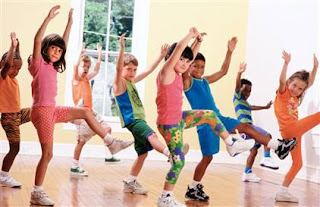Fitness For Kids: Getting Children Off the Couch
Direct your child's energy into a lifelong love of physical activity.
According to an article from MayoClinic.com, family health is an important and far-reaching topic, and we all want the best for our families. Included in this section are health articles and tips from respected leaders in the medical field in areas including men's, women's, and kid's health, pregnancy, and aging.
For many kids, biking to the playground and playing kickball in the backyard have given way to watching television, playing video games and spending hours online. But it's never too late to get your child off the couch. Use these simple tips to give your child a lifelong appreciation for activities that strengthen his or her body.
Set a good example
Your active lifestyle can be a powerful stimulus for your child. If you want an active child, be active yourself. You can't just "talk" activity — you need to make activity a priority for yourself as well. Go for a brisk walk, ride your bike or take a yoga class. Better yet, invite your family to play catch or to join you on a walk. Talk about physical activity as an opportunity to take care of your body, rather than a punishment or a chore. Praise, reward and encourage activity. You might even set goals and have everyone track their activities and progress.
Wonder how much physical activity is enough? Consider these guidelines from the Department of Health and
Human Services:
Kids. Children and adolescents age 6 and older need at least an hour a day of physical activity. Most of the hour should be either moderate or vigorous aerobic activity. In addition, children should participate in muscle-strengthening and bone-strengthening activities at least three days a week. Many classic activities — such as playing on playground equipment and jumping rope — cover all the bases at once.
Adults. Most healthy adults need at least 150 minutes a week of moderate aerobic activity, such as brisk walking or swimming, or 75 minutes a week of vigorous aerobic activity, such as running — preferably spread throughout the week. Adults also need strength training exercises at least twice a week.
Limit screen time
A surefire way to increase your child's activity level is to limit the number of hours he or she spends in front of a screen — including television, video games and online activities. For example, you might consider a limit of one or two hours a day and, for a better night's sleep, no screen time in the hour before bed. To make it easier, don't put a television in your child's bedroom, don't watch television while you're eating dinner, and restrict computers and other electronic gadgets to a family area. Also consider limiting other sedentary activities, such as text messaging or chatting on the phone.
If your child plays video games, opt for those that require movement. Activity-oriented video games — such as dance video games and video games that use a player's physical movements to control what happens on the screen — boost a child's calorie-burning power. In a Mayo Clinic study, kids who traded sedentary screen time for active screen time more than doubled their energy expenditure.
Establish a routine
Set aside time each day for physical activity. Get up early with your child to walk the dog or take a walk together after dinner. Start small, gradually adding new activities to the routine as you — and your child — become more fit.
Let your child set the pace
For many kids, organized sports are a great way to stay fit. But team sports or dance classes aren't the only options. If your child is artistically inclined, take a nature hike to collect leaves and rocks for use in a collage. If your child likes to climb, head for the nearest jungle gym. If your child likes to read, walk or bike to a local library for a book. Or simply turn on your child's favorite music and dance in the living room. Get creative as you search for activities your child enjoys.
Promote activity, not exercise
To keep your child interested in fitness, make it fun:
Get in the game. Play catch, get the whole family involved in a game of tag or have a jump-rope contest. Try classic movement games such as Simon says or red light, green light. If you don't remember the rules, make up your own!
Try an activity party. For your child's next birthday, schedule a bowling party, take the kids to a climbing wall or set up relay races outside.
Put your child in charge. Let your child choose an activity of the day or week. Batting cages, bowling and neighborhood play areas all count. What matters is that you're doing something active.
Give the gift of activity. Offer activity-related equipment, games or outings as gifts and rewards — both for your child and others.
Remember, incorporating physical activity into your child's life does much more than promote a healthy weight. It sets the foundation for a lifetime of fitness and good mental and physical health.
You have read this article Health and the family /
tips for family health
with the title Fitness For Kids: Getting Children Off the Couch. You can bookmark this page URL http://movimentosporting1906.blogspot.com/2012/03/fitness-for-kids-getting-children-off.html. Thanks!







The article written very well, writing technique looked very skillful and has a good sense of humor, let a person think, and let people with a cheerful mood, the feeling is very good. I like the article, the heart be thank the authors of shares.raspberry ketones does it work |how does the raspberry ketone diet work |raspberry ketone
ReplyDelete